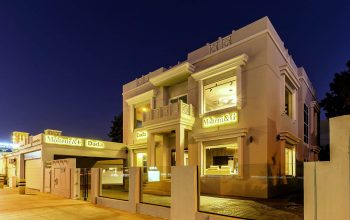An office fit out with luxury elements often changes how the full site looks and feels. It blends clean design with detailed touches that add value over time. While every office is different, luxury fit outs aim to add function while improving the visual finish of daily work areas.
Refined appearance across all areas:
Luxury interior office fit out use neat lines, matching tones, and detailed finishes. From reception to boardrooms, the finish stays consistent. The setup may include solid wood desks, built-in shelves, or high-end partitions. These touches add to the full look and give a clear, ordered impression across all corners of the site.
Strong first impression for visitors:
Clients and partners who enter the office often notice small details. High-quality chairs, neat flooring, and custom lighting shape how visitors feel during meetings. The first view of a space may affect their memory of the visit, and a luxury setup adds to a more refined outlook.
Better staff comfort through material choices:
A luxury fit out often makes use of upgraded seating, spacious layouts, and proper air flow. Padded chairs, wider tables, and quiet flooring support long hours of use. These features may not be visible at first but support a steady work rhythm. Even light switches and handles are placed for ease.
Lasting quality of fittings:
Luxury setups often use materials that wear less over time. Items like stone tops, solid timber, and custom glass tend to stay in better shape with daily use. This reduces small repairs or updates later and allows the office to stay neat with less effort. Maintenance tasks are usually fewer and simpler.
Support for modern tech systems:
Luxury fit outs often include built-in tech such as screens, touch panels, or cable channels hidden inside desks or walls. This leads to fewer wires and a cleaner look. Rooms are often planned to include plug points, media panels, and hidden lights that support both work and calls.
Clear area zoning and flow:
Luxury offices are often arranged to guide movement in a simple path. Staff areas, meeting rooms, and waiting spots are split in a way that reduces traffic or noise. The result is a site where each section works with the others without overlap or disruption.



